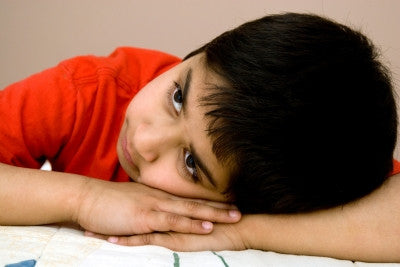
Separation Anxiety Disorder - More than Just First Day Fears
My daughter will turn 1 next month and is currently experiencing a terrible bout of separation anxiety. It’s a stressful phase for all of us, and one made worse by her blood curdling screams, but a phase nonetheless. Like all baby-isms, this will pass in a bittersweet fashion as she moves on to the next developmental step in the coming months. Young children are constantly learning about the world around them and a healthy dose of fear or anxiety is an acceptable reaction at all stages. However, like all normal development stages, separation anxiety can manifest in more dangerous ways. Defining “Normal” Normal bouts of separation anxiety usually occur around 8-12 months until 3-4 years and then again from 5-7 and 11-14. The latter two periods coincide with the beginning of elementary and middle school, which represent an especially stressful time for some children who have trouble adapting to changing expectations academically as well as socially. It is normal for children at these stages to display a developmentally appropriate response to separation from home and the primary caregiver. The summer months often trigger these feelings since children have been home more than usual and will view it (and the parent or caregiver there with them) as a safe haven. When to Be Concerned  While some fear at the outset of a new school year is normal in all children, separation anxiety disorder can occur in as much as 2-4% of them. Considered a mental disorder, any time that so-called “normal” fears last more than four weeks is cause for concern. Some of the additional symptoms include:
While some fear at the outset of a new school year is normal in all children, separation anxiety disorder can occur in as much as 2-4% of them. Considered a mental disorder, any time that so-called “normal” fears last more than four weeks is cause for concern. Some of the additional symptoms include:
 While some fear at the outset of a new school year is normal in all children, separation anxiety disorder can occur in as much as 2-4% of them. Considered a mental disorder, any time that so-called “normal” fears last more than four weeks is cause for concern. Some of the additional symptoms include:
While some fear at the outset of a new school year is normal in all children, separation anxiety disorder can occur in as much as 2-4% of them. Considered a mental disorder, any time that so-called “normal” fears last more than four weeks is cause for concern. Some of the additional symptoms include:
- Excessive fear of harm to either the child or the primary caregiver during the time that the child is at school
- Tantrums and other extreme displays of distress at the time of separation that do not subside within a few minutes and persist for more than one month
- Nightmares, refusal to sleep
- Physical “ailments” such as stomach pain, headaches and heart palpitations on a daily basis that disappear once the child is home
- Bullying – A child who is afraid to come to school may not have a psychological issue as much as a social one. School refusal may be a result of unimagined fear - a bully. In these instances, teachers and school counselors are the first line of defense in identifying the situation, reporting it to parents and administrators, increasing the child’s level of safety, and preventing further damage down the line.
- Undiagnosed psychological or developmental issues – More than a quarter of all children with separation anxiety disorder have a correlating disruptive disorder such as ADHD, conduct disorder, or oppositional defiant disorder. In these cases, identifying and treating the underlying problem can help to relieve the separation anxiety symptoms.

Leave a comment